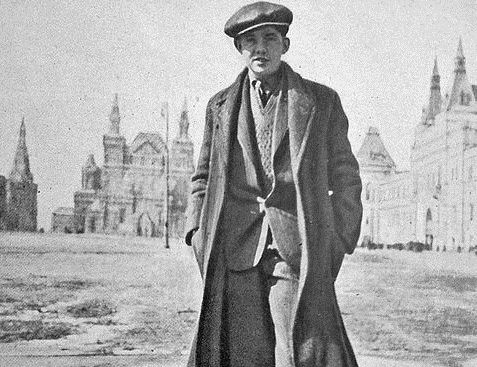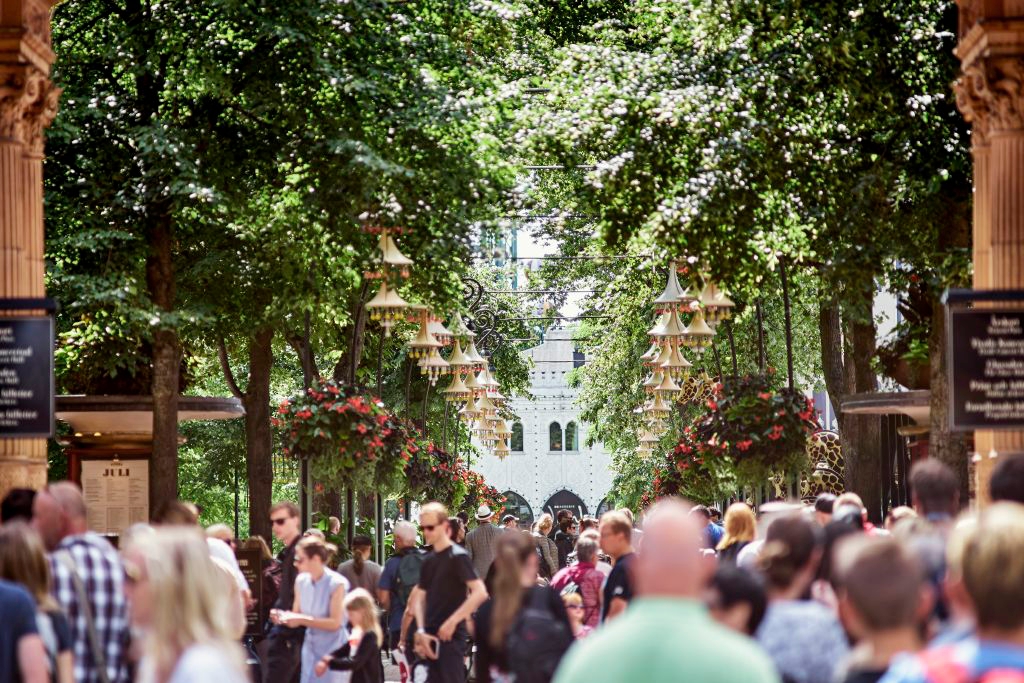Palle Huld’s adventure began on the morning of 24 Febuary 1928, while he was working at F Bulow & Co, an automobile firm on Esplanaden in the centre of Copenhagen where he had recently started an apprenticeship. Huld was accosted by an excited colleague clutching a copy of that morning’s Politiken newspaper under his arm. The paper was advertising for a healthy boy of 15 years, preferably a boy scout, to travel around the world in Phileas Fogg’s footsteps in commemoration of the 100-year anniversary of Jules Verne’s birth.
Politiken’s idea was to show their readers that in those ‘modern’ times it was possible to take a trip around the earth, without the use of aircraft, in a lot less than 80 days – in just 44 days in fact. While it was by no means alone in running such a feature, the newspaper was the only one which had decided to send such a young, inexperienced traveller.
According to Huld’s autobiography, published in 1992, ‘something in him had to try it.’ He took his leave from work and rushed home to Nyhavn for the required parental permission slip. But when he entered the Politiken building on Rådhuspladsen at 2 pm as requested, he was shocked by the 350 other hopefuls who filled the staircase waiting to be seen. What chance did he stand?
Pack your bags Palle
The boys were interviewed individually about what they would do in difficult situations. When asked how he would react if he found himself in China having lost his entire belongings, one boy answered that he would ‘try to find a Dane somewhere to help me’. Huld returned home to his teasing sisters, who assured him that ‘mummy’s boy Palle’ would never be picked. Surely other contenders – high school students from wealthy backgrounds – were a more obvious candidate than this carrot-topped apprentice who had never completed his education. Yet on his return to the Politiken office later that same day, Huld was the individual the newspaper chose.
Huld’s train left Copenhagen at 8am on 1 March. All the way across Denmark crowds waved flags and offered small gifts for the voyage.
The proposed route, though it fulfilled the criteria of going around the world, was somewhat northern biased. From Copenhagen, Huld was to cross Denmark to the port of Esbjerg on Jutland’s west coast and then travel by boat to England. He would then head north to Scotland, crossing the Atlantic into Canada, which he would traverse by train before sailing to Japan. The route would then take him through south-east Asia, then by the Trans-Siberian Railway across the Soviet Union to Moscow, from where he would travel via Poland to Germany before returning home to Denmark.
Memorable Japan
What Politiken didn’t admit to either Huld or their readers was their concern about the war-torn region of Manchuria, now a region in north-east China. In 1928, Manchuria was in the midst of a power struggle between Soviet forces and the Japanese, who were attempting to gain a foothold in China. It wasn’t only the youngster’s welfare they were worried about, but also preserving the good name of their newspaper.
The paper could breathe a sigh of relief when Huld left Manchuria unscathed. He almost ruined the whole trip in Canada though, missing the cross country train after an impromptu tour of St. John to impress a young girl he had met on the boat, courtesy of Politiken’s expense account. All was not lost however and he reached Montreal on a special train used by emigrants.
Crossing the world in just 44 days without the use of aircraft meant that Huld could not stop in any country for long. But in only 48 hours, Japan managed to leave him with a lasting impression. He was a novelty in the Far East, although this had less to do with his assignment than with his red hair.
From Moscow to the movies
Moscow gave Huld his biggest scare of the trip. He arrived early with no-one to meet him, and bravely decided to try to locate the Danish consulate himself. After a lengthy tour of the city by horse-drawn cab, he was hopelessly lost. Noticing a Hotel Europa, he asked the reception staff who telephoned the consulate to send someone out to meet him. Huld had been lucky. Foreigners in Moscow at that time could easily be arrested simply for taking a walk without an escort.
Huld’s trip ended safely, much to the relief of his mother who had been prescribed sleeping tablets for the duration. With 20,000 people waiting to greet him on his return to Rådhuspladsen, Huld’s journey ended on the shoulders of two burly policemen who pushed their way through the crowd to his waiting family.
For Huld, this adventure was only the beginning of a life spent in the public eye. Until his death in 2010, he has enjoyed a lengthy acting career, gracing the stage of the Royal Theatre as well as starring in numerous films.















